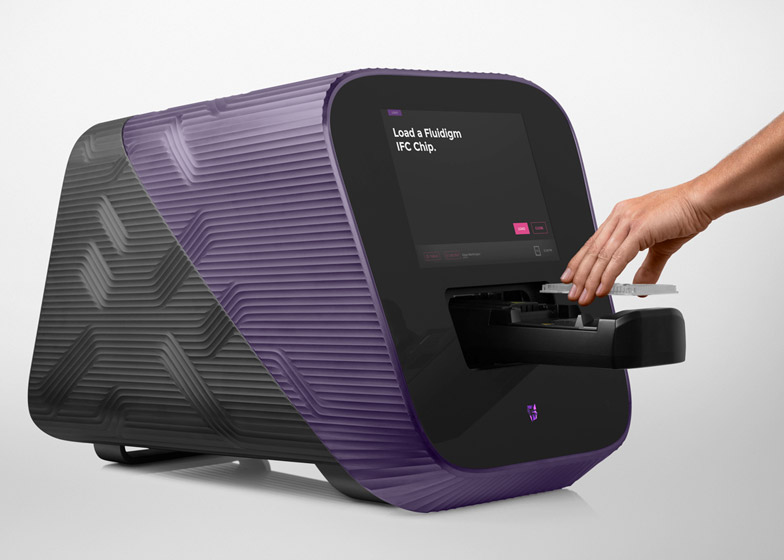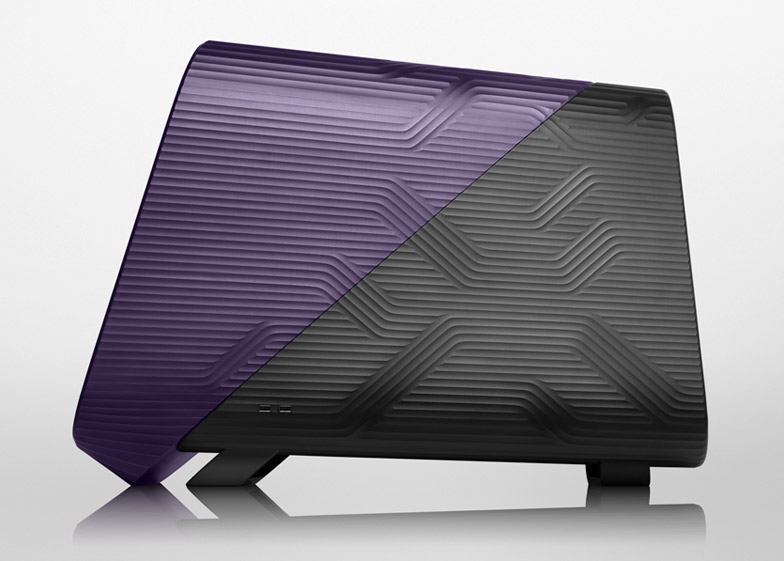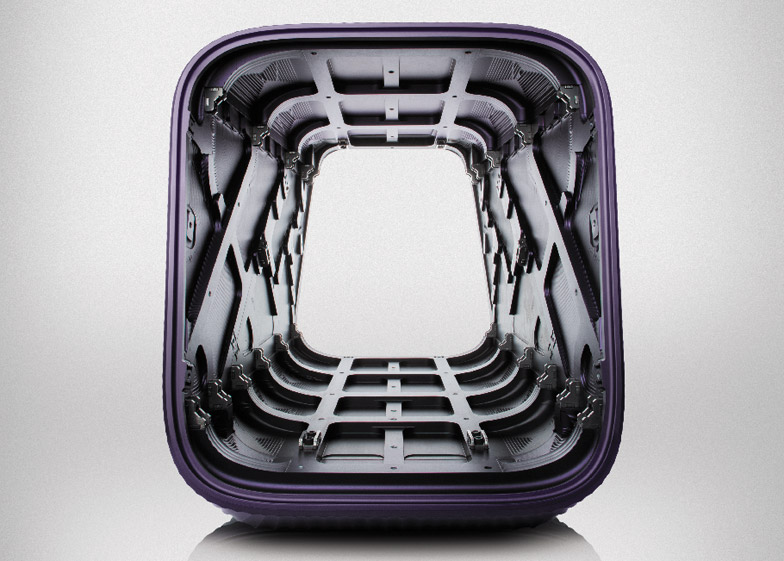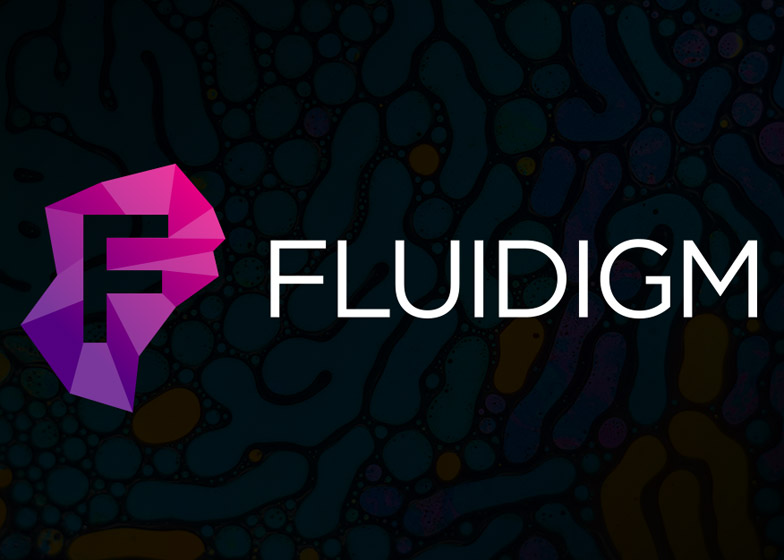Yves Behar's San Francisco studio Fuseproject has designed a machine for a biotech company that will be used for genetic testing experiments (+ slideshow).
Fuseproject completed the project for Fluidigm, a company that builds tools for research into genomics – a discipline of genetics that involves the sequencing, assembly and analysis of the formation and structure of a complete set of DNA within a single cell.
"Fluidigm invented single-cell testing, which can run genomics testing on low-concentration DNA samples and provide genetic test results in less than three hours," said a statement from Behar.
Genomics testing helps people to understand their disease risks, ancestry, drug responses and personal traits.
Fluidigm's latest product, Juno, is a "sample preparation engine" that combines a number of "difficult steps" in the process of testing DNA from small saliva samples into a single machine.
"We leveraged a lot of what we learned from processing single cells to create Juno," said Fluidigm founder Gajus Worthington on the company's website.
"It integrates the tedious and expensive steps of sample handling and pre-amplification to deliver very high-quality data at extremely high throughput from trace quantities of DNA and even from degraded DNA."
Juno was designed by Behar's studio to create a simple interface for technicians using the complicated process.
"We designed the newest machine to reflect a new industrial design, user experience and user interface language" said Behar. "Juno is a breakthrough in single-cell testing. The shape is sculptural and practical; a delicate balance between a futuristic piece of machinery and something more familiar."
The compact machine is diagonally split into two, opening along the divide to allow easy access to its interior for checks and maintenance.
The front half of the aluminium shell is purple and the back portion is dark grey. This cover is milled into shape at high speeds, resulting in a series of ridges that pattern the exterior.
A front panel that incorporates a touch screen is titled upward so it faces a standing lab technician.
Small fluid samples stored in cartridges are inserted into a drawer that opens from below the screen, which is programmed to guide the user through the process with a bold visual interface paired with spoken prompts.
The designers also rebranded the company, creating an animated logo centred around a capital F that is surrounded by shifting polygons coloured in a range of purple and pink gradients.
"Rather than a static wordmark, we built the brand around the foundation of the company – a living, animated logo, reflective of the cell samples they test," said Behar.
The same design language used for Juno's interface is mirrored in the new website design to keep "consistent flow between product and brand".
"As Fluidigm is on the forefront of innovation in the life sciences industry, it was important that the brand, physical and digital products be unified to reflect that same pioneering sense, while supporting scientists and lab technicians through their everyday work," Behar said.








